The General Belgrano started life as the USS Phoenix , a Brooklyn class light cruiser and named for the capital of Arizona.
She was ordered on February 13 1929 with the contract being awarded to the New York Ship building company of Camden New Jersey on August 22 1934.
She was laid down April 25 1935 and launched on March 12 1938, she would then under go fitting out and trials before being commissioned as CL-46 on October 3 1938.
The USS Phoenix would be home ported in San Pedro California for a short time before finally being homeported in Pear Harbor Hawaii in March 1940.
It would be while she was at her home port that the Japanese would attack on December 7 1941, the USS Phoenix would escape the carnage of Pearl harbor and take the fight back to the Japanese.
The Ship and her history
As built the USS phoenix was 608ft long had a beam of 61.7ft a draft of 19.9 feet and a displacement of 9,800tons.
Powered by 8 oil fired boilers, turning four geared turbines and four screws she produced 100,000shp, giving the USS Phoenix a top speed of 32.5 knots.
Her main armament consisted of fifteen 6 inch 47 caliber main guns in five turrets, three forward and two aft, she also had eight 5 inch 25 caliber, as well as, four quad 40mm bofors, two twin 40mm bofors guns, and finally eighteen single 20mm Oerlikon all for air defense.
She also carried two steam catapults which would launch her four SOC Seagull float planes these would be used for reconnaissance missions mainly.
USS Phoenix would serve in the Pacific theatre during World War II and earn 11 battle stars for her actions.
Like many ships at the end of the war she was decommissioned this took place on July 3 1946 and was subsequently laid up.
After a spell in mothballs she was finally stricken from the naval register on January 27 1951, on April 9 1951 she was purchased by the Argentine government and renamed 17 De Octubre in honor for Loyalty day.
During Argentine service her appearance would change, her steam catapults were removed along with some anti aircraft guns being replaced by the two French Alouette III Helicopters and the British Sea cat anti aircraft missiles (sea cats added in 1968-69).
In 1955 she joined the Coup d’état which overthrew Juan Peron, and subsequently she was renamed General Belgrano after General Manuel Belgrano the founder of a navigational school in 1799 and fought for Argentine Independence.
Whilst on exercises in 1956 the now General Belgrano rammed her sister ship (Ex USS Boise also a Brooklyn class) Nueve de Julio which damaged both ships.
With the Argentine economy going into decline the General Belgrano would ultimately seldom put to sea, and when she did she rarely left the EEZ of Argentina, in the 1970’s her sister ship had become a floating wreck used to house prisoners of the Junta (The Disappeared) and to act as a parts hulk for the General Belgrano.
Her sister ship was in such a state that by 1977 she was stricken from the Naval register and ended her days being scrapped in Japan.
1982 Falklands war
With the heavily unpopular Junta Regime still in charge of the country and fearing that it could be overthrown a solution was sought to increase the Juntas popularity.
Operation Rosario an amphibious landing was launched on April 2 1982 from the type 42 destroyer ARA Santisima Trinidad using special forces to retake the Falkland Islands, the ARA Cabo San Antonio would later land the bulk of Argentine forces and surround Port Stanley.
The Junta had banked on the fact the British would not respond, indeed in a defense white paper issued some months earlier had highlighted that the two amphibious ships HMS Fearless and Intrepid were to be scrapped and the newly built HMS Invincible was to be sold to Australia.
However the Junta had underestimated the British Government led by Margret Thatcher who saw this as a violation of sovereignty and vowed a response.
“The Government have now decided that a large task force will sail as soon as all preparations are complete. HMS “Invincible” will be in the lead and will leave port on Monday”
As luck would have it most of the fleet were out on exercise when the order came through, logistically this meant that the fleet could be readied far quicker than normal.
Joining HMS Invincible would-be HMS Hermes and 41 other warships (including submarines) comprising of mainly Destroyers and Frigates, backing them up would be no fewer than 22 Royal fleet Auxiliary vessels and 62 Merchant navy vessels including the ocean liners Canberra and Queen Elizabeth 2.
With a Task force sailing south and both governments unwilling to negotiate war was inevitable, General Belgrano and other naval assets began training and drilling for the impending confrontation.
On April 12 1982 the British announced a 200nm exclusion zone around the islands stating any Argentine aircraft, Naval or Auxiliary vessel would be attacked without warning, subsequently on April 23 1982 in a diplomatic note passed to Argentina via the Swiss Embassy stated the following:
“ Any Argentine ship or aircraft considered to pose a threat to British forces would be attacked”
It was now understood and later confirmed in subsequent interviews by Argentine officers that any Argentine aircraft or ship would be engaged regardless of its position.
Quote from Rear Admiral Allara stated “After that message of 23 April, the entire South Atlantic was an operational theatre for both sides. We, as professionals, said it was just too bad that we lost the Belgrano”
It should be worth pointing out that under UNCLOS (United Nations Convention for Law of the Sea) was a novelty and there was no provision in law for this.
It is seen as a framework in which it would give both sides time to Identify aircraft and ships to ensure they were not attacked if they were neutrals, it seems the wider maritime and Air lines heeded the warning and stayed clear for the most part.
Time Line
General Belgrano left the port of Ushuaia on April 26 1982 and by April 29 1982 had reached her patrol area, Subsequently the Aircraft carrier ARA Veinticinco de Mayo had also left her port and was steaming north of the Falklands, this would ultimately prove to be a pincer movement.
On April 30 1982 the General Belgrano in company with two Destroyers were sailing south of the Falkland islands near Burwood Bank when HMS Conqueror detected the group and began shadowing even though she was outside the exclusion zone, but; the preceding change in the rules of engagement days earlier on the 23 April now gave him the option to fire.
On May 1 1982 Admiral Lombardo issued an order that all Argentine ships are to seek out British forces and launch a massive attack the following day. This was confirmed by Captain Hector Bonzo in many interviews.
The Signal was intercepted and passed to the Prime Minister who after some discussion agreed to issue the order to sink the ship.
On May 2 1982 at 15:57 local time HMS Conqueror fired three MK8 torpedoes at the General Belgrano, two of the torpedoes struck the ship, the first hit the three quarters down the port side in the machinery room and the second hit around 15 meters aft of the bow subsequently blowing it off entirely, the Third torpedo missed but struck one of her escorts without detonating.
The General Belgrano had not been at action stations and as a consequence most of her watertight doors were open, had she of been closed up for combat the sinking may have taken much longer with the outcome the same.
With the hit in the machinery room there was no electrical power to pump water out of the ship and at 16:24 Captain Hector Bonzo ordered the ship abandoned.
Some time after the General Belgrano sank taking with her 323 lives out of her 1,096 crew.
Aftermath
With the General Belgrano sunk and having little to no ability to counter British Nuclear powered Hunter Killer submarines, the rest of the Argentine Navy retreated to port it would not sail again for the duration.
During the conflict it is now known that HMS Splendid had also detected and was following the Aircraft carrier ARA Veinticinco de Mayo and had also reported the sighting to London and requested permission to fire.
It would have been relatively easy for HMS Splendid to take out the carrier at roughly the same time, however It is my belief something more political was at play here: NOTE: this next paragraph is my own personal opinion
If HMS Splendid had indeed taken down the Aircraft carrier it could have resulted in the American carrier doctrine being undermined as well as reinforcing the soviet doctrine of using submarines to take out aircraft carriers.
After the surrender of Argentine forces on the Falklands the myths and legends began in abundance, some claim HMS Invincible was attacked and sunk which is false she served until 2005 and others claim General Belgrano’s sinking was a war crime.
Did she really pose a threat?
Belgrano was still armed with fifteen 6 inch guns that could fire a 130lb shell close to 20,000 yards, in contrast nearly if not all the British ships were armed with a single 4.5 inch could fire a shell of 46lbs 21,000 yards.
While both types had the range advantage the shells would likely have done minor damage to the thicker armor of a WWII era ship.
Only two country class Destroyers HMS Antrim and HMS Glamorgan carried anti ship missiles, these were the MM38 Exocet which they had received in their mid to late 1970s upgrades and comprised of four single launch canisters in place of B turret forward of the bridge.
Five type 21 Frigates also carried single launch exocet missile canisters forward of their bridge HMS Active, Arrow, Ardent, Alacrity and Avenger, these ships could pose a real threat to Belgrano.
Sea Harriers would have also proved a threat to Belgrano as her group had limited air defense relying on the now obsolete sea cat system, however; the sea harriers did not carry air launched Exocet nor harpoon missiles and any action involving them would have to resort to conventional bombing likely with 500lb dumb bombs.
Had Belgrano got into Port Stanley she could have provided substantial fire support to Argentine land forces, whilst also denying the port and surrounding areas to British ships which also assisted in shore bombardment during the advance.
Therefore it can be argued that Belgrano despite being a WWII relic still could be a big threat to any British warship or land forces within the range of her fifteen guns, as well as some increased air defense capability surrounding Port Stanley had she made it.
The reality and legal position with Quotes and sources
Neither the UK or Argentina formally declared war but a defacto state of war existed between the two countries.
On April 23 the UK government passed the Argentine government a note stating that:
“In announcing the establishment of a Maritime Exclusion Zone around the Falkland Islands, Her Majesty’s Government made it clear that this measure was without prejudice to the right of the United Kingdom to take whatever additional measures may be needed in the exercise of its right of self-defense under Article 51 of the United Nations Charter.
In this connection Her Majesty’s Government now wishes to make clear that any approach on the part of Argentine warships, including submarines, naval auxiliaries or military aircraft, which could amount to a threat to interfere with the mission of British Forces in the South Atlantic will encounter the appropriate response. All Argentine aircraft, including civil aircraft engaged in surveillance of these British forces, will be regarded as hostile and are liable to be dealt with accordingly.”
This is a statement making it clear that any Argentine forces regardless of their position will be attacked the subsequent book written by Middle Brook where he interviews Argentine and British officers highlight the fact that the Argentine Officers had clearly understood this message.
Note: this notice was sent 9 Days before Belgrano is sunk.
Source: Martin Middlebrook Argentine fight for the Falklands (2009) Page 74-75
Rear Admiral Allara stated “After that message of 23 April, the entire South Atlantic was an operational theatre for both sides. We, as professionals, said it was just too bad that we lost the Belgrano”
Source: Martin Middlebrook Argentine fight for the Falklands (2009) Page 116
Article 51 States: Nothing in the present Charter shall impair the inherent right of individual or collective self-defense if an armed attack occurs against a Member of the United Nations, until the Security Council has taken measures necessary to maintain international peace and security.
Source: United Nations Charters https://www.un.org/en/about-us/un-charter/full-text#:~:text=Article%2051,maintain%20international%20peace%20and%20security.
After the War Captain Hector Bonzo stated may times until his death in 2009 that he indeed had orders to seek out and engage any British ship on sight confirming Admiral Lombardos May 1 order.
He also stated that his ship was a legitimate target travelling in international waters at the time she was sunk.
In subsequent interviews notably from the Guardian as well as other news outlets from various countries and also featuring on a national Geographic documentary, Captain Hector Bonzo in his own words states that: “far from retreating from the British Task Force we sailed west with two accompanying destroyers, our change of direction was a temporary maneuver.”
And that: “Our mission in the south wasn’t just to cruise around on patrol but to attack”
Source: Guardian Interview with Captain Hector Bonzo 2003 https://www.theguardian.com/politics/2003/may/25/uk.world
Source: National Geographic Documentary 2003 https://www.amazon.com/National-Geographic-Sinking-Belgrano/dp/B0002JK6VC
During and interview Captain Hector Bonzo stated “The exclusion zone did not exclude danger or risks; it was all the same in or out. I would like to be quite precise that, as far as I was concerned, the 200-mile limit was valid until 1 May, that is while diplomatic negotiations were taking place and/or until a real act of war took place, and that had happened on 1 May”
Note: Belgrano was sunk May 2 1982
Source: Martin Middlebrook Argentine fight for the Falklands (2009) Page 116
In 2007 Captain Hector Bonzo gave an interview to Clarin in which he stated
It was an act of war. The acts of those who are at war, like the submarine’s attack, are not a crime … The crime is the war. We were on the front line and suffered the consequences. On April 30, we were authorised to open fire, and if the submarine had surfaced in front of me I would have opened fire with all our 15 guns until it sank.
Source: Captain Hector Bonzo IPS News article 2007 https://www.ipsnews.net/2007/05/argentina-memories-come-flooding-back-the-sinking-of-the-belgrano/
In 1994 An official Argentine defense ministry report written by Eugenio Miari released to the public described the orders and actions of the General Belgrano and concluded the report by stating the sinking was a legal act of war.
Quote the report states : “a legal act of war” and that “acts of war can be carried out in all of the enemy’s territory” and “they can also take place in those areas over which no state can claim sovereignty, in international waters”.
Source: Argentine news paper report 1994 http://find.galegroup.com/ttda/infomark.do?&source=gale&prodId=TTDA&userGroupName=wes_ttda&tabID=T003&docPage=article&searchType=&docId=IF502064289&type=multipage&contentSet=LTO&version=1.0
Source: Blog website confirming report existence https://medium.com/@justinkuntz_64388/war-crime-allegations-in-the-falklands-war-e3a8f7fe69df#:~:text=In%20August%201994%2C%20the%20Argentine,areas%20over%20which%20no%20state
While there was a publicly stated total exclusion zone of 200nm around the islands as it is clear there was no precedent before or since for this move, indeed the act of the exclusion zone does not feature in any UNCLOS documentation of the time.
Source: United Nations Law of the Sea documentation in full (PDF file) https://www.un.org/depts/los/convention_agreements/texts/unclos/unclos_e.pdf
In June 2000 Families of the deceased tried to launch a law suite against the UK in the European court of Human Rights the case was dismissed
Source: BBC news article http://news.bbc.co.uk/2/hi/uk_news/812146.stm
Source: Guardian news article author Clare Dyer https://www.theguardian.com/uk/2000/jul/20/claredyer

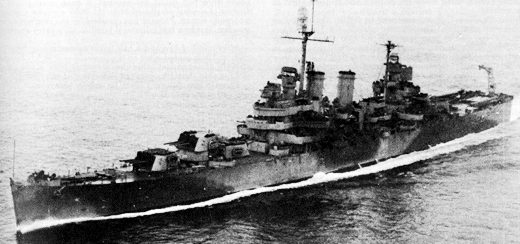

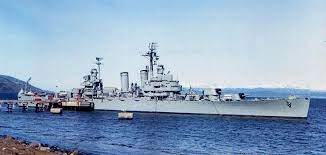

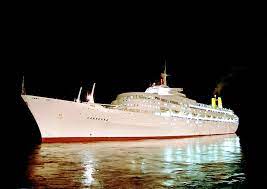

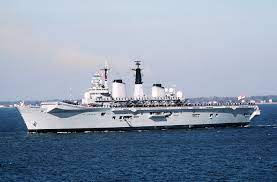
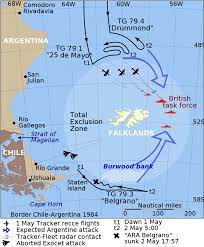
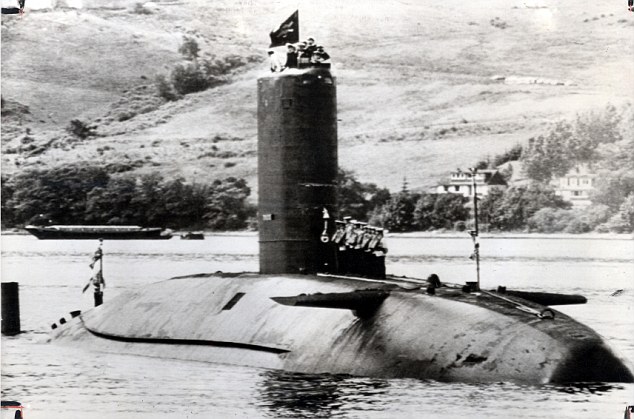
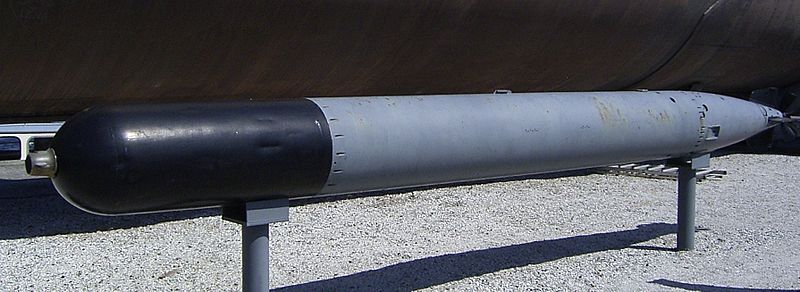
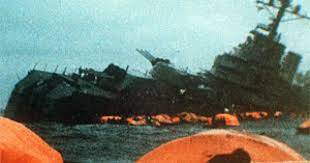

Ricky D Phillips claimed Belgrano’s 6″ were replaced with longer ranged weapons on a Drachinifel video. I can’t find anything on that? Anyone know the facts?